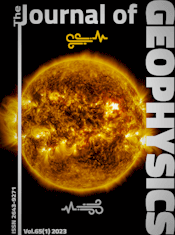An integrated approach to enhance community resilience in disaster response in Sri Lanka
Article Sidebar

Vols. 1-18 (1924-1944), ISSN 0044-2801
Main Article Content
Abstract
Climate-related extreme geophysical events are among critical global challenges, and Sri Lanka is the second most-affected nation. To minimize disaster impacts and enhance the livability of human settlements, the concept of building community resilience has become crucial in disaster management and preparedness. This paper presents key results and recommendations from an integrated approach to post-disaster recovery interventions and improvements in preparedness activities, to reduce the impact of future disasters and associated risks. We tackled this goal by undertaking a reflective assessment using a case of post-disaster recovery interventions after the floods and landslides of May 2017 in three districts of Sri Lanka. This study emphasizes the need for capitalizing the immediate post-disaster response period to integrate risk reduction and resilience-building activities from the early stages of the recovery timeline. Preparedness and resilience enhancement activities need to align with the Sri Lanka Community Resilience Framework as it can help optimally utilize time and resources to enhance resilience in resources-limited contexts.
 ARK: https://n2t.net/ark:/88439/x059916
ARK: https://n2t.net/ark:/88439/x059916
Permalink: https://geophysicsjournal.com/article/301
Article Details
References
Christoplos, I. (2006) Links between relief, rehabilitation and development in the tsunami response. Tsunami Evaluation Coalition, London.
Collins, A.E. (2018) Advancing the Disaster and Development Paradigm. Int. J. Dis. Risk Sci. 9:486–495
Dart, J., Davies, R. (2003) A dialogical, story-based evaluation tool: The most significant change technique. American Journal of Evaluation 24(2):137-155
Disaster Management Centre–DMC (2017) Rapid impact assessment report. Disaster management center. UNDRR
Dissanayake, P., Hettiarachchi, S., Siriwardana, C. (2018) Increase in disaster risk due to inefficient environmental management. Land use policies & Re-location Policies, Case studies from Sri Lanka. Procedia Eng. 212: 1326-1333
Eckstein D., Hutfils M., Winges, M. (2019) Global Climate Risk Index 2019. Germanwatch, Berlin. ISBN 9783943704709
François, A. (2014) From disaster relief to development assistance: Why simple solutions don't work. Canada's J. Global Pol. Anal. 70: 110-118
Hoong, L.L., Marthandan, G. (2014) Critical dimensions of disaster recovery planning. Int. J. Bus. Management 9(12):145
Kapucu, N., Liou, K.T. (2014) Disaster and development: Examining global issues and cases. Springer. ISBN 9783319044682
Macrae, J., Bradbury, M., Jaspars, S., Johnson, D., Duffield, M. (1997) Conflict, the continuum and chronic emergencies: a critical analysis of the scope for linking relief, rehabilitation and development planning in Sudan. Disasters 21(3):223-243
Ministry of Disaster Management–MDM (2017) Sri Lanka Post-Disaster Needs Assessment, Floods and Landslides. Sri Lanka
Mulligan, M. (2013) Rebuilding communities after disasters: Lessons from the tsunami disaster in Sri Lanka. Global Policy 4(3):278-287
Niekerk, D. (2008) From Disaster Relief to Disaster Risk Reduction: A Consideration of the Evolving International Relief Mechanism. J. Transdisc. Res. Southern Africa 4(2):355-376
National Research Council–NRC (1991) A Safer Future: Reducing the Impacts of Natural Disasters. Washington, D.C.
Otto, R., Weingärtner, L. (2013) Linking relief and development: More than old solutions for old problems. Ministry for Foreign Affairs of the Nether-lands, Den Haag (IOB Study, 380)
Pathirage, C., Seneviratne, K, Amaratunga, D., Haigh, R. (2015) Knowledge factors and associated challenges for successful disaster knowledge sharing. Global Assessment Report on Disaster Risk Reduction
Proag, V. (2014) The Concept of Vulnerability and Resilience. Procedia Econ. Fin. 18(6):369–376
Ranjan, E., Abenayake, C. (2014) A Study on Community's Perception on Disaster Resilience Concept. Proc. Econ. Fin. 18:88-94
Saja, A.M.A, Sahid, M.S.L., Sutharshanan, M. (2019) Implementing Sendai Framework priorities through risk-sensitive development planning – A case study from Sri Lanka. Prog. Dis. Sci. 100051
Saja, A.M.A., Goonetilleke, A., Teo, M., Ziyath, A.M. (2019) A critical review of social resilience assessment frameworks in disaster management. Int. J. Dis. Risk Red. 101096
Saja, A.M.A, Sahid, M.S.L., Sutharshanan, M. (2016) A localized approach in risk-sensitive development planning to build resilient communities: An experience from Northern Sri Lanka. In: Proc. 7th International Conference on Sustainable Built Environment 110-120, ICSBE
Siriwardana, C.S.A., Jayasiri, G.P., Hettiarachchi, S.S.L. (2018) Investigation of efficiency and effectiveness of the existing disaster management frame-works in Sri Lanka. Proc. Eng. 212:1091-1098
Tafti, T.M., Tomlinson, R. (2015) Best practice post-disaster housing and livelihood recovery interventions: Winners and losers. Int. Dev. Plan. Rev. 37:165-185
Twigg, J. (2004) Disaster risk reduction: mitigation and preparedness in development and emergency programming. Overseas Development Institute (ODI).
Wanninayake, S. (2018) Increasing trend of flood and landslide disasters in Sri Lanka: Socio-Economic perspective. Proc. 6th International Conference of Sri Lanka Forum of University Economists, 2017. pp 107-110
Zaidi, R.Z. (2018) Beyond the Sendai indicators: Application of a cascading risk lens for the improvement of loss data indicators for slow-onset hazards and small-scale disasters. Int. J. Dis. Risk Red. 30-B:306-314












